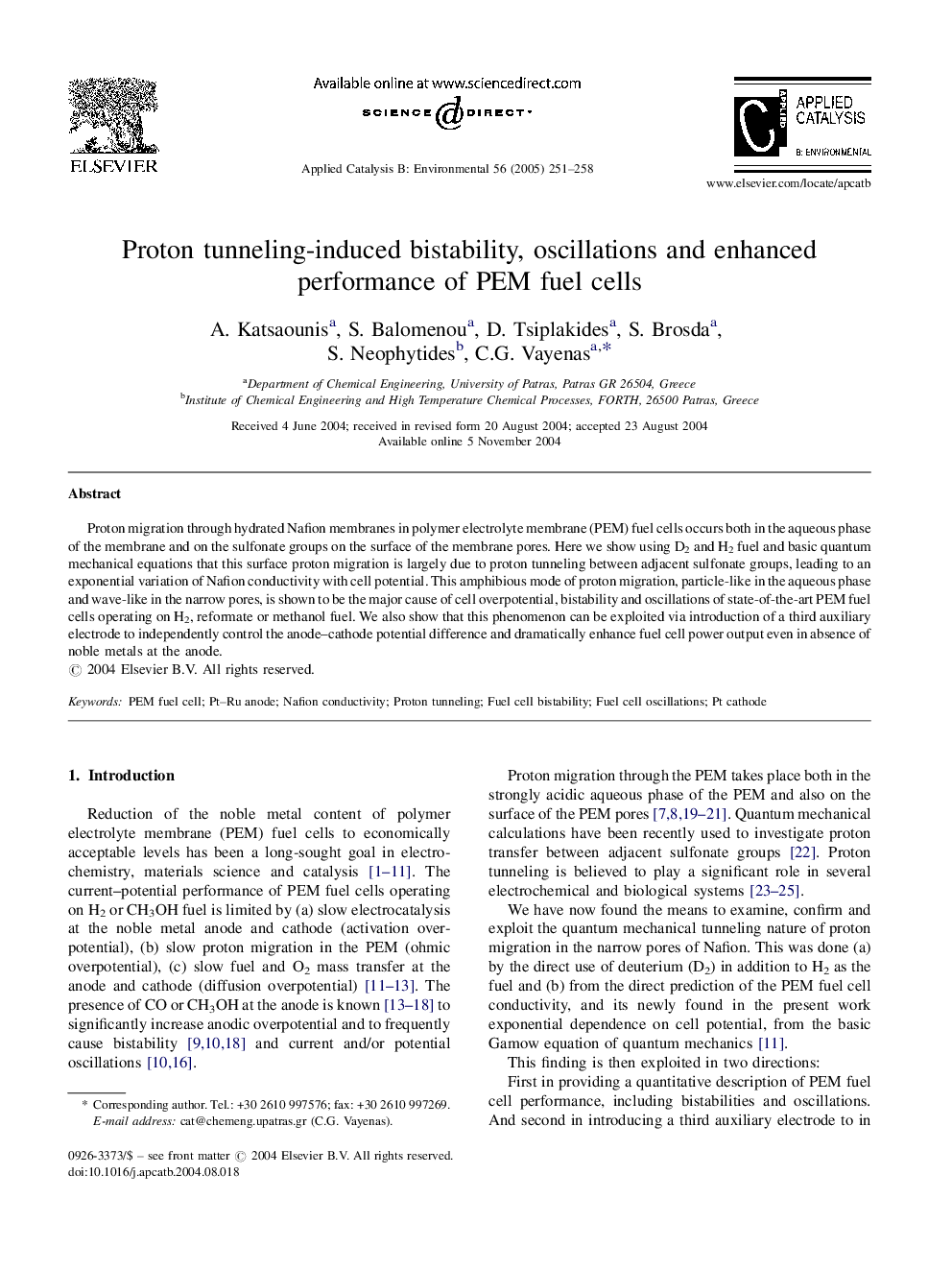| Article ID | Journal | Published Year | Pages | File Type |
|---|---|---|---|---|
| 10241499 | Applied Catalysis B: Environmental | 2005 | 8 Pages |
Abstract
Proton migration through hydrated Nafion membranes in polymer electrolyte membrane (PEM) fuel cells occurs both in the aqueous phase of the membrane and on the sulfonate groups on the surface of the membrane pores. Here we show using D2 and H2 fuel and basic quantum mechanical equations that this surface proton migration is largely due to proton tunneling between adjacent sulfonate groups, leading to an exponential variation of Nafion conductivity with cell potential. This amphibious mode of proton migration, particle-like in the aqueous phase and wave-like in the narrow pores, is shown to be the major cause of cell overpotential, bistability and oscillations of state-of-the-art PEM fuel cells operating on H2, reformate or methanol fuel. We also show that this phenomenon can be exploited via introduction of a third auxiliary electrode to independently control the anode-cathode potential difference and dramatically enhance fuel cell power output even in absence of noble metals at the anode.
Related Topics
Physical Sciences and Engineering
Chemical Engineering
Catalysis
Authors
A. Katsaounis, S. Balomenou, D. Tsiplakides, S. Brosda, S. Neophytides, C.G. Vayenas,
